#save the pollinators
Photo

#wasps#wasp#entomology#pollinators#save the pollinators#insect#animals#nature#science#ecology#conservation#memes
2K notes
·
View notes
Text
The goldenrods are always a pollinator favorite.
79 notes
·
View notes
Text
It’s butterfly season again here! You know what that means! Here are some of the ways YOU can help the monarch butterfly’s! (And also just pollinators in general)Also please make sure to do your own fact checking, I try my best.
Don't Use Pesticides in Your Own Garden! If you still want to protect some of your plants try spraying neem oil in a spray bottle with water around your garden. If you do get neem oil make sure its 100% natural, and remember nothing (including helpful pollinators) are going to touch this plant, if not the chemicals that are added can actually hurt you, especially if you are going to eat this plant! Another natural pesticide that actually helps pollinators is peppermint, thyme, and rosemary! But most of all plant wildflowers! These flowers have evolved to handle the climate and feed the native species EFFECTIVELY! It’s actually a problem people aren’t planting native species of flowers/plants.
PLANT NATIVE MILKWEED. Milkweed is essential to the monarch’s life cycle and when butterfly season is over or the milkweed gets too big, guess what? YOU CAN EAT IT. I left the link at the bottom if you want to check it out! There are also some “pollinator” or “bee/butterfly/hummingbird” seed packets you can buy that have a mix of all types of seeds. I know some people cant have outdoor plants/garden so see where places are asking for volunteers for “seed stomps” or just general help with pollinators.
Side note if you don’t know what a seed stomp is, you know when you see a really crunchy leaf and to go and stomp on it? It’s like that but with “seed balls” aka a glob of (dried) mud with seeds in it. You can also help make theses by just getting mud and mixing it with seeds (pollinator friendly or wildflower) and letting them dry in the sun for a day and just throwing them into the forest or any place they wont be messed with too much. Bonus points if you put a little water on them or even cover them a little bit with dirt!
Create a Monarch Way-Station! A Monarch way station is basically a butterfly’s all in one hotel with breakfast stop. Monarchs travel 2,500 miles on their long journey, thats roughly 20-30 miles each day! This is why its so important to have little rest and fuel up stations along the way. There are many different ways to make a way-station so make sure to check them out! You can also just half a orange and place it a bit up high so the ants don’t get it. You can also make or buy sugar water but please for the love of my sanity DON’T BUY THE ONE WITH RED DYE!!! There are many recipes online for how to make butterfly or humming bird sugar water.
Join the Fight to Stop Climate Change. Not only does this save quite literally everyone on earth but many animals. Many of the reasons climate change is happening is because people are deforesting large areas of forest. “But how do i help stop this?” I hear you ask, and ill tell you. It can be in the little things. Now don’t get me wrong, doing small things might not solve the ever growing climate crisis but it does help. For example a project i did involved me learning about deforestation for coffee. Before you stop drinking coffee and throw out all of those precious beans there are still ways to enjoy things AND help the environment! Shade grown coffee is coffee that is grown under the canopy of large forest and does not require deforestation and STILL TASTES THE SAME. Another way is reusable coffee filters. All the trash from the plastic rings on the tiny coffee cups, ends up in the ocean or a landfill. Also biodegradable things will be your new best friend. Also if you don’t already RECYCLE! DID YOU NOT LEARN ANYTHING FROM SCHOOL???? My favorite way to help is to actually use soon to be trash and make little trinkets out of them! You don’t have to go dumpster diving either, just save some things you would normally throw away and make stuff to satisfy the crow brain!
Use FSC Certified Wood. If any of my crafting and building folk out there use wood make sure its FSC certified! What FSC certified wood means is that it has been ethically produced and harvested from forest that are properly managed. It should have a label or a spray painted sign on it thats says “FSC certified”.
Learn More. Always make sure that when people talk about really anything you fact check it! This includes me! The best way to help out a cause is to learn about it and all the ways you can help! The things i listed here are just the surface of what you can do to help. There is also many routes to go like hands on or remote support.
Lastly make sure to spread the Word. Sadly most of the time in order to help the world or even these small little butterfly’s it takes money and space, not everyone has that. The best way to help if you cant donate to a “fighting the climate crisis” fundraiser or plant a huge garden filled with everything any animal will ever need, is to spread the word. You don’t have to stand at the side of the road or have a ted talk in the subway, you can use this very website or other social medias. Use your platform to spread the word and save some monarchs!
#save the monarchs#save the bees#save the pollinators#save the world#monarch butterfly#butterfly’s#climate catastrophe#climate justice#climate crisis#pollinators#reblog#learnsomethingneweveryday#hey everyone#guys look#these boys are so tiny this year :(#make them a small house
3 notes
·
View notes
Text
I miss my baby 😭
#grief#mourning#loss of a child#loss of a loved one#organ donor#organ donation#gift of hope#save the bees#pollinators#environment#native plants#save the pollinators#nature#trees#plant trees for the future#autism#nonbinary#awn#autistic women and non-binary network#certified wildlife habitat
2 notes
·
View notes
Text

Save the bees.
Redbubble
#save the bees#save the planet#environmentalism#environmental#bees#pollinators#save the pollinators#beekeeping#nature#wildlife#planet earth#climate change#climate crisis#climate action#honey bees
0 notes
Text
If you're in the U.S. and want to support local plants and pollinators, I hope you've heard of the Xerces Society. Weird name, but super cool resource for gardening for insect pollinators (and they work for other invertebrate species, too)
They've got regional native plant lists:
They've also got super helpful things in their resources section, including Washington's plan for helping bumble bees:
Another really cool resource is the National Wildlife Federation's list of key stone plant species by ecoregion:
2K notes
·
View notes
Link
It takes a bit of backstory to explain why this is good news.
Some endangered species laws were written before invertebrate conservation (insects, molluscs, etc.) was taken into consideration, so the language of the laws does not explicitly include these groups of animals. For example, the California Endangered Species Act states that endangered species can be mammals, birds, amphibians, reptiles, or fish.
Historically, aquatic invertebrates (lobster, clams, etc.) were included under the umbrella of “fish”, but courts have now ruled that terrestrial invertebrates can also be lumped into the “fish” category and therefore protected under the California Endangered Species Act.
Thanks to this ruling, threatened species of native bumblebee will now be able to receive legal protection.
#invertebrate conservation#bee conservation#pollinator conservation#save the bees#good news#environment#biodiversity#insect conservation#tw insect#tw bee
5K notes
·
View notes
Note
Saw ur post on insta about milkweed. Are you telling me that I’ve been manually separating my seeds from the fluff for years and am only just now learning this trick?!?!!!!???
Mind = blown, thank you so much for sharing
Happy to assist.
For those who haven't seen it:
218 notes
·
View notes
Text
This is a big deal! While the importance of pollinators has been in the headlines more over the past few years, a lot of the focus has gone toward European honey bees, which are not native here in North America. This new plan focuses specifically on our native bumble bees, to include severely declining species like the western bumble bee (Bombus occidentalis).
What's really cool is that they've targeted the ecoregions that are likely to have the most species of threatened bumble bees. It doesn't mean they won't do anything elsewhere, but when you have limited resources you want to make them have as much impact as possible.
In the meantime, consider this a reminder to add some native plants to your yard, garden, and/or porch, say no to pesticides and other yard chemicals unless absolutely necessary, and spend a little time learning about the native pollinators in your area!
#pollinators#bees#save the bees#bumblebees#bumble bees#insects#invertebrates#animals#wildlife#native species#native plants#Washington#Washington State#PNW#Pacific Northwest#entomology#science#scicomm#endangered species#conservation
385 notes
·
View notes
Text
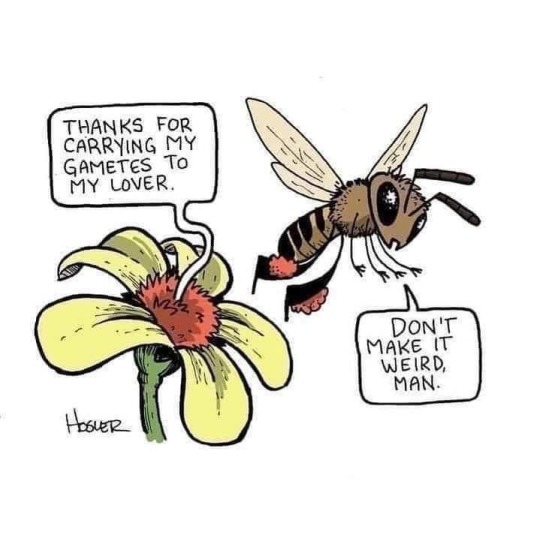
333 notes
·
View notes
Text
Collecting Milkweed Seeds - All Facts, All Seeds, No Fluff
(OK but please also consider I'm not an ~expert~ I'm not a ~scholar~ I'm just a nerd on Tumblr who really likes milkweed and wanted to make a fun lil post about it)
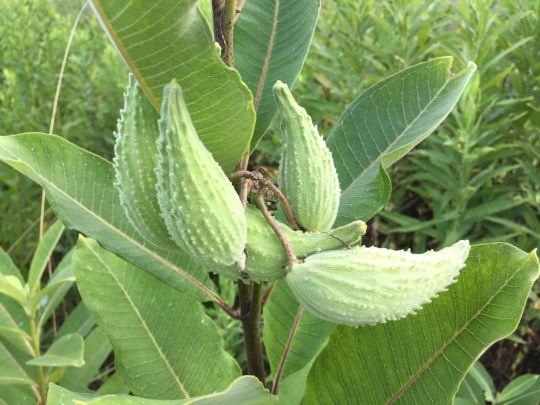
[Image ID: a green, leafy common milkweed plant (Asclepias syriaca) with five large, ovalish and bumpy green seed pods. The seed pods are currently unopened.]
It’s fall, which means if you haven’t seen them already, now’s the time that milkweed plants will start producing seed pods! (Well, technically, they’re called follicles, but fuck it they’re seed pods). Each pod has dozens of seeds inside, some species can even have up to 200 seeds, so even collecting just a few can be a good way to boost your pollinator gardening efforts big time! What you do with them then is up to you--adding life to your backyard garden, sharing with friends, making seed bombs--but first you’ve gotta collect them.
The first thing you want to do is identify your milkweed plants--in an ideal world, you’d be able to tell precisely what kind of milkweed you’re collecting from (so you can know precisely what growing conditions that species prefers.) But when they’re dying back, forming pods, and releasing their seeds, it can be hard to tell. It helps to visit sites early, to know what milkweeds are there, and while you’re there you might even find some forming pods.
It can be helpful to band off the pods early! This will keep the seeds from escaping, so you can come back later and collect them! I would only do this for a couple of pods--each pod has a lot of seed in it, so only taking one or two from each plant should still net you plenty of rewards! When I’m doing this in my backyard, I tend to use rubber bands--the size of rubber band you’ll need varies depending on the species. I’ve also seen people use the lacy-looking jewelry bags to a similar effect--if the pod splits open, all the seeds get trapped in the bag!


[Image ID: the first image is of appears to be swamp milkweed (Asclepias incarnata) with about fifteen long, green, smooth and pointed seed pods. Most of the pods have small black rubber bands wrapped around the midsections. The second image is of what appears to be common milkweed (Asclepias syriaca) with two large, ovalish and bumpy green seed pods. A white fine mesh bag has been tied over the pods.]
For people who want to get seeds from unopened pods, you have to be very careful not to force open a pod that isn’t ready--otherwise, the seeds inside won’t fully develop. How do you tell if a pod is ripe? There’s a seam in each pod, and it should open fairly easily with minimal pressure if it’s basically ready. If you’re basically prying it open, you’re too early. The seeds inside should be a nice dark color, and be plump in the middle--if they’re creamy colored or light orange, you’re too early. There may be some undeveloped seeds in each pod (I am talking maybe 1 to 3 here), but if the majority of them are ready, you’re good to go!

[Image ID: a tropical milkweed (Asclepias curassavica) seed pod that has been opened at the seam, revealing dark brown seeds and lots of creamy white floss. Four seeds are floating away from the pod on fluffy white comas. The pod is being held between a white person's fingers.]
I’ve also seen people who go late late late into the season, after most of the pods have already fully split off and released their seeds. Some of the seeds occasionally stay in the pod, so they’ll take the leftovers that didn’t get scattered after winter passes. That’s a fair strategy! I prefer to get mine way early on, so I can get a clear ID of what kind of milkweed it is (some will flower and produce pods at the same time), but if you already got an ID early in the season and then come back later this can also work! But…

[Image ID: several dried brown seed pods have opened fully, releasing a cloud of milkweed floss with seeds attached. Some seeds are still in the pods, but many are primed to float away.]
There is, however, one thing that tends to be a bit annoying about collecting milkweed seeds--and that’s the fluff. These fluffy white bits attached to the seed--called comas--function similarly to the iconic fluffy dandelion seed. A milkweed seed’s coma allows it to float through the air and on the water until it (hypothetically) reaches bare soil or an otherwise suitable start to settle down and germinate. If you’re collecting the seeds for later use, though, that same coma can mean your milkweed seeds are traveling through the air and away from where you’re collecting them, or all over your apartment once you get them home. Removing the comas by hand is an option, but tedious, and still leads to a nice pile of fluffy that will get airborne at the first gust of wind. At the end of the day, for many people trying to collect milkweed seeds, the coma is just an annoying part they dread.
Fortunately, there are plenty of ways to collect milkweed seeds without having to deal with the comas long-term!

[Image ID: A single brown milkweed seed floating on a comparatively huge mess of white fibers.]
Method 1
So this is my favorite method because it's honestly one of the simplest and easiest once you get used to it. You open the pod, grip the top part of the middle ‘pith’ section tight, and gently scrape off the seeds into a bowl or bag. This leaves you with almost no fluff in your collection bin, and you can then toss the middle fluffy part--or I’ve heard of people collecting milkweed fluff for spinning! Most of the videos I’ve seen on it use common milkweed or other large milkweed pods as an example--however, I’ve successfully done this with smaller milkweed pods like A. curassavica as well.
youtube
Method 2
This method is one I’ve used in the past. Take the seeds and fluff and put them into a bag (paper or plastic) and add a coin or two. Shake the bag around--a lot. The coin will dislodge the comas from the seeds. The seeds will then drop to the bottom of the container, and the fluff will float around on the top. I’ve also seen this with buckets and blocks, like in the video below!
Method 3
I’ve seen a handful of people discuss burning the floss of the seeds! Apparently the seeds themselves aren’t damaged badly by the fire, though honestly this is a method that I am simply too anxious to try myself.
youtube
Method 4
This was a method I found while I was looking for other methods people have done. Apparently, you can just roll the pod between your hands and it’ll work to dislodge the seeds? I may have to try it next time!
youtube
Hopefully this advice is helpful for you all! I know collecting seeds was a hassle for me before I learned my favorite method. If I had a nickel for every time I got yelled at for releasing milkweed fluff into the house...
If you've got a method that I haven't heard about yet, let me know!! I'm always down to learn more about milkweed, and it can also help someone else down the line!
#milkweed#asclepias#seed saving#seed collecting#pollinator garden#outdoor gardening#gardening#flowers#ani rambles#out of queue#i think this was my first time doing image descriptions??? if they suck ass let me know and I'll Make Adjustments As Recommended#i've seen people talk about spinning the milkweed floss??? but I saw online that it was too brittle to be spun????#but either way if you wanna save the floss and do Stuff with it go for it#did you know. or actually this is me functioning from memory.#but if I recall correctly I believe in either the WWI era or the WWII era#people would pay kids to go around fields collecting milkweed seed pods and pay them by the pound#and then they'd take the floss and use it to fill life jackets for soldiers?#i think this was less of a 'extorted child labor sweat shop' deal and more of a like#'hey kids wanna earn some cash and also be a Patriotic Citizen? go find some seed pods and we'll give you money'#which i guess many people WOULD consider an Extorted Child Labor kinda deal but like#idk seems like a chill deal to me#anyways hope you guys like this post#Youtube
126 notes
·
View notes
Text



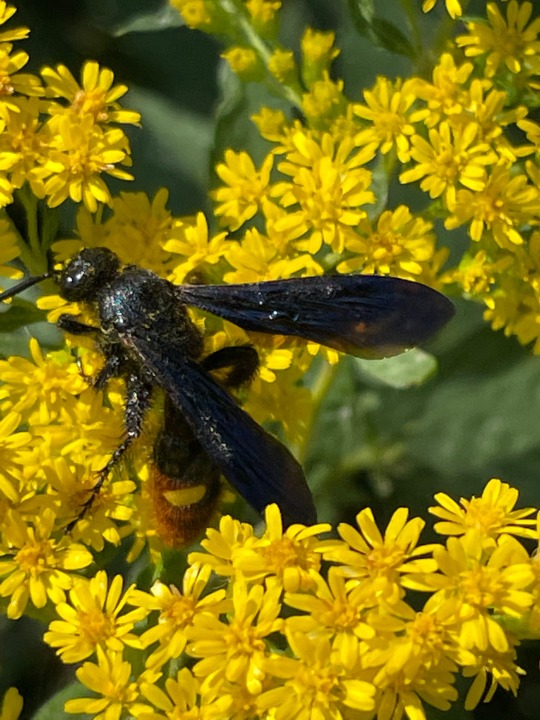
Scolia dubia dubia - Two-spotted Scoliid Wasp
0 notes
Text

Bees on on wild coneflower (echinacea), heavy with pollen.
#midwest#nature photography#wildlife photography#summertime#bee#bees#save the bees#echinacea#coneflower#insects#flying insects#pollinators#insectblr#beeblr#nature photos#wildlife photos#wildlife#original photography#original photographers
114 notes
·
View notes
Text
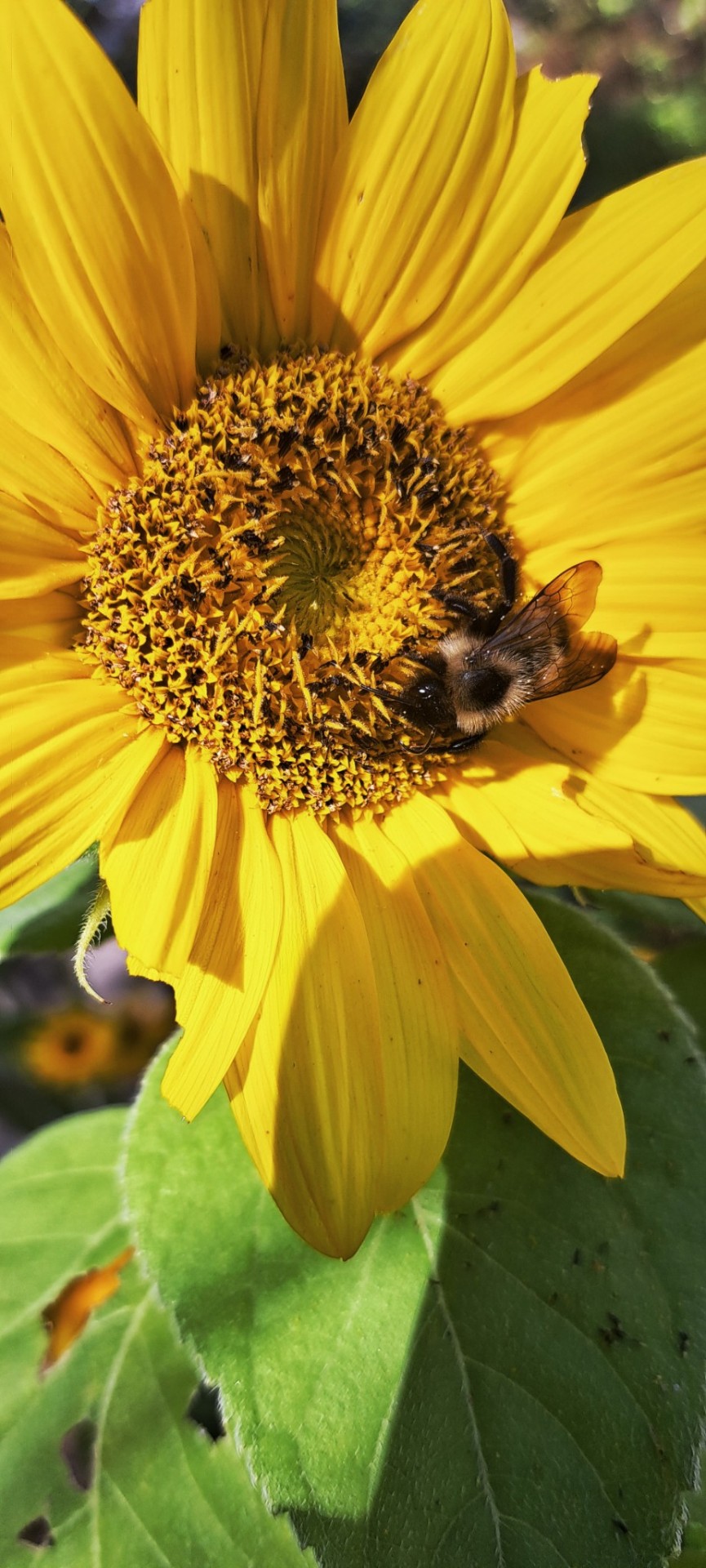

Bees love sunflowers 🌻
#save the bees#bee pollen#bee#protect the bees#i love bees#bees#pollinating#pollinators#pollination#sunflower aesthetic#sunflower photos#sunflower photography#sunflowers#sunflower#flower photoshoot#flower photography#flowers#flower#my photography#my photos
897 notes
·
View notes
Text
As a society we have done thistles so dirty. Not even pollinator-plant zealots recommend planting thistles even though pollinators go absolutely crazy over them.
I saw 2 (two) Great Spangled Fritillaries trying to cram themselves onto the same thistle flower today as well as a thistle plant with multiple American Bumblebees on it. These things are a monarch magnet too.
I know what I'm gonna be gathering seeds from

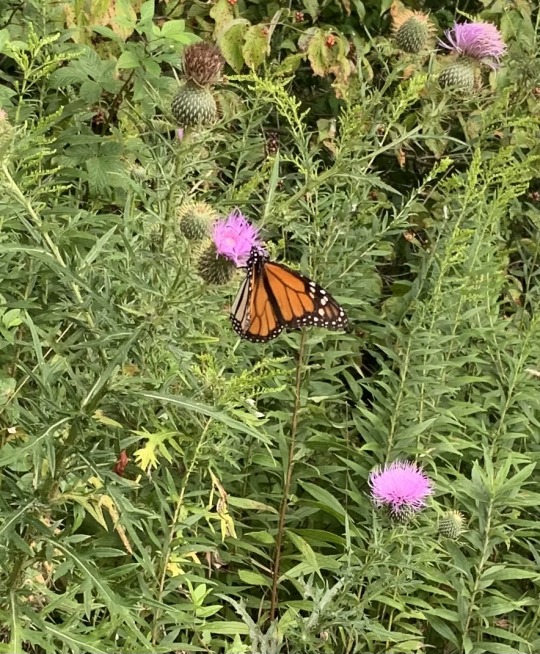
1K notes
·
View notes
